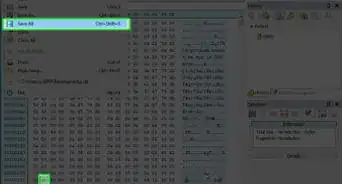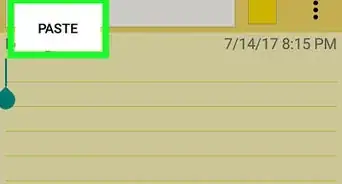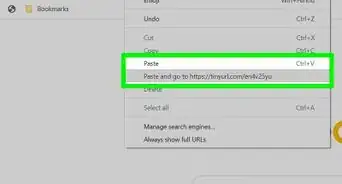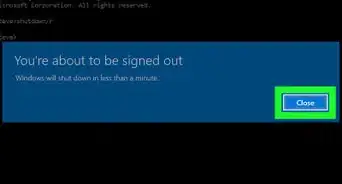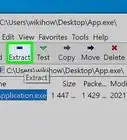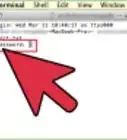This article was written by Stan Kats and by wikiHow staff writer, Nicole Levine, MFA. Stan Kats is the COO and Chief Technologist for The STG IT Consulting Group in West Hollywood, California. Stan provides comprehensive technology & cybersecurity solutions to businesses through managed IT services, and for individuals through his consumer service business, Stan's Tech Garage. Stan has over 7 years of cybersecurity experience, holding senior positions in information security at General Motors, AIG, and Aramark over his career. Stan received a BA in International Relations from The University of Southern California.
The wikiHow Tech Team also followed the article's instructions and verified that they work.
This article has been viewed 741,638 times.
Are you looking for a creative way to customize your Windows 10 or 11 desktop? While you won't find the option to change an EXE program's icon built into Windows, you can use free apps to modify any program's icon on your PC. If you don't want to download software or make permanent changes to the EXE itself, you can create a shortcut to the EXE and change its icon instead. This wikiHow article will show you how to change the icon of an EXE file on your Windows PC and help you find awesome free downloadable Windows icon files (ICO).
Things You Should Know
- Resource Hacker (free) and GConvert (shareware) make it easy to permanently change any EXE file's icon.
- If you don't want to permanently alter the EXE, create a shortcut to the EXE and change its icon instead.
- Windows icon files must be in the .ICO file format, but you can convert PNG and SVG files to ICO.
Steps
Editing the EXE in Resource Hacker
-
1Download and install Resource Hacker. Resource Hacker is a free program for Windows that allows you to edit EXE file properties, including the icon, permanently. This is the easiest way to change your Windows icons, but it does require downloading a safe third-party app. To install Resource Hacker:
- Go to http://www.angusj.com/resourcehacker in your computer's web browser and click the blue Download link near the top of the page.
- Click EXE install, then select a save location if prompted.
- Double-click the downloaded setup file.
- Follow the setup prompts.
-
2Open Resource Hacker. Once installed, you'll find it in your Windows Start menu.
-
3Open the EXE File in Resource Hacker. Here's how:
- Click the File menu and select Open.
- Browse for the EXE file. The location will vary by app, but you'll usually find EXE files in your main drive under Program Files or Program Files (x86).
- Click Open.
- You can also right-click the EXE file by right-clicking its icon on your PC and selecting Open with > Resource Hacker.
-
4Press Ctrl+R. This opens the "Replace icon in" window.
- You can also get here by clicking the Action menu and selecting Replace Icon…
-
5Click Open file with new icon…. It's at the top of the "Replace icon in" window.
-
6Select your ICO file and click Open. Once selected, you'll see your new icon in the left panel.
-
7Click the Replace button. It's near the bottom of the right panel.
- Depending on the file you select as your icon, you may have to select a version of the icon on the left side of the window before clicking Replace.
-
8Save your changes. Click the first green floppy disk icon or go to File > Save to save your new icon. The EXE file now has your new icon.
Editing the EXE in GConvert
-
1Download and install GConvert. This shareware Windows app allows you to edit the icon of any EXE program permanently, although some features of the app won't be available for free after the 15-day trial period.[1] Go to https://www.gdgsoft.com/download/gconvert.aspx in your computer's web browser, then do the following:
- Click the Download Mirror 1 link, then select a download location if prompted.
- Double-click the downloaded file.
- Click Yes when prompted.
- Click Instant Install, then follow any prompts.
-
2Open GConvert and click Continue. Once you've installed the app, you'll find it in your Windows Start menu. Clicking Continue takes you to the main GConvert window.
-
3Click the Tools menu. You'll see it at the top of the window.
-
4Click Modify icons in EXE/DLL… on the menu. This opens the "EXE/DLL Icon Patcher" window.
-
5Select the EXE file you want to customize. Here's how:
- Click the folder icon to the right of the field.
- Browse to and select the EXE file. The location will vary by app, but you'll usually find EXE files in your main drive under Program Files or Program Files (x86).
- Click Open.
-
6Select the current icon and click Modify selected icon.... Another file browser window will expand.
-
7Select your ICO file and click Open. In the File Explorer window, go to the location of your icon file, then click the icon file to select it. You'll now see the replacement icon.
-
8Click Close and open in GConvert. This option is at the bottom of the window. The EXE's icon is updated.
- Once the EXE file has loaded in GConvert, you can click the red circle in the top-right corner of the GConvert window to close it. Your EXE file should now have a different icon.
- It may take a few minutes for your EXE file's icon to change.
Creating a Shortcut
-
1Save your ICO file in a location that isn't likely to change. Saving your icon file in a location like the "Pictures" folder prevents the icon from disappearing if you accidentally move the icon file.
- If you don't want to download an app to change your icons, you can create a shortcut to the original EXE and easily change its icon instead. This allows you to keep the EXE file tucked away in a folder while you use the shortcut to open the program.
-
2Right-click the desktop and select New > Shortcut. Make sure you're right-clicking a blank space (e.g., not a file, the taskbar, or a folder) when you do this.
-
3Click the Browse… button. This opens your file browser.
-
4Select the EXE file and click Open. Now you'll need to browse to the folder that contains the EXE file for which you want to replace the icon.
- The location will vary by app, but you'll usually find EXE files in your main drive under Program Files or Program Files (x86).
-
5Click Next then enter a name. Type in the name that you want your shortcut to have.
-
6Click Finish. It's in the bottom-right corner of the window. Now you'll see a shortcut to the EXE file on your desktop.
-
7Right-click the shortcut and select Properties. This opens a dialog window containing several tabs, including one called Shortcut.
-
8Click the Change Icon… button. It's at the bottom of the pop-up window. Now you'll see a list of basic icons built in to Windows.
-
9Click the Browse… button. You'll see this at the top-right corner of the window. This opens the File Explorer.
-
10Select your ICO file and click Open. This selects your new icon.
-
11Click OK two times. The shortcut you've created now has a new icon.
- If you're using Windows 10, you'll see a small arrow on the shortcut indicating that this is a shortcut and not the actual EXE file. Windows 11 users won't see this arrow. If the Windows 10 shortcut arrow bothers you, you can remove the arrow in your registry.
- You can now drag the shortcut to the desired location, such as your taskbar or another area of your desktop.
- You can also rename the icon by right-clicking it and selecting Rename. On Windows 11, this is the icon with the cursor at the top of the right-click context menu.
- Once you've created a shortcut to the EXE file, you cannot move the original EXE file as doing so will break the shortcut.
Expert Q&A
-
QuestionCan I change the icon for a specific file?
 Stan KatsStan Kats is the COO and Chief Technologist for The STG IT Consulting Group in West Hollywood, California. Stan provides comprehensive technology & cybersecurity solutions to businesses through managed IT services, and for individuals through his consumer service business, Stan's Tech Garage. Stan has over 7 years of cybersecurity experience, holding senior positions in information security at General Motors, AIG, and Aramark over his career. Stan received a BA in International Relations from The University of Southern California.
Stan KatsStan Kats is the COO and Chief Technologist for The STG IT Consulting Group in West Hollywood, California. Stan provides comprehensive technology & cybersecurity solutions to businesses through managed IT services, and for individuals through his consumer service business, Stan's Tech Garage. Stan has over 7 years of cybersecurity experience, holding senior positions in information security at General Motors, AIG, and Aramark over his career. Stan received a BA in International Relations from The University of Southern California.
Cybersecurity Expert Sure! There are third-party tools, like the ones mentioned in the article above, but this option is also built into Windows and Mac in their default file viewers. You can actually change the properties of just about any executable and add any icon to make it customized to your taste.
Sure! There are third-party tools, like the ones mentioned in the article above, but this option is also built into Windows and Mac in their default file viewers. You can actually change the properties of just about any executable and add any icon to make it customized to your taste. -
QuestionWhich version of Resource Hacker should I use?
 Community AnswerUse the latest version.
Community AnswerUse the latest version. -
QuestionI able to change all in RH, when I try to rename an exe file, the app runs with an error, unable to find it's associate DLL. It's useless when I could not rename exe. How do I change exe file name in RH?
 Community AnswerProbably you can't rename file names in .DLL files using resource hacker as these files are reserved by the system and it is linked in system functionality. You can only replace and view the files in resource hacker.
Community AnswerProbably you can't rename file names in .DLL files using resource hacker as these files are reserved by the system and it is linked in system functionality. You can only replace and view the files in resource hacker.
Expert Interview
References
About This Article
1. Create or download an .ico file.
2. Right-click the desktop.
3. Click New and then Shortcut.
4. Browse for the .exe and click OK.
5. Name the file and click Finish.
6. Right-click the shortcut.
7. Click Properties.
8. Click Change Icon and select the new icon.

